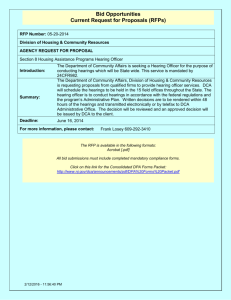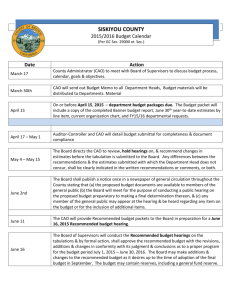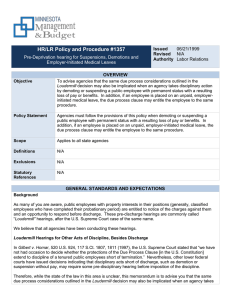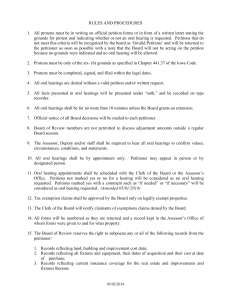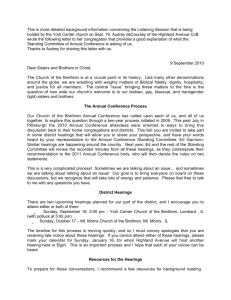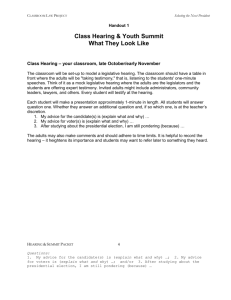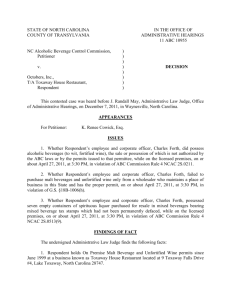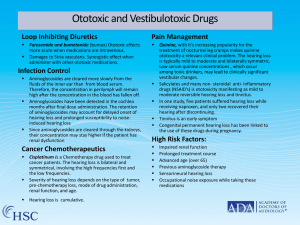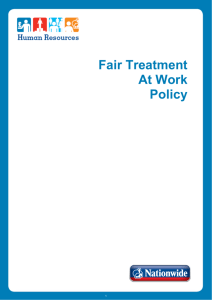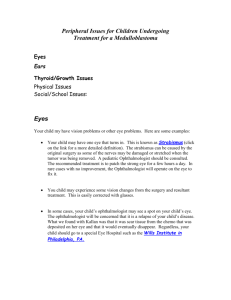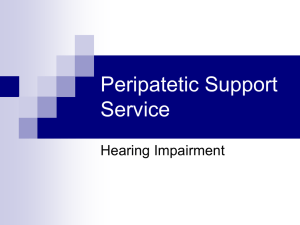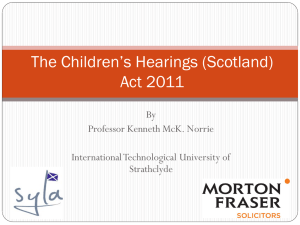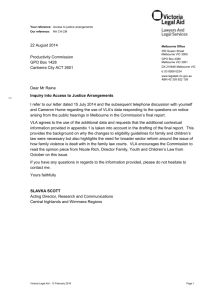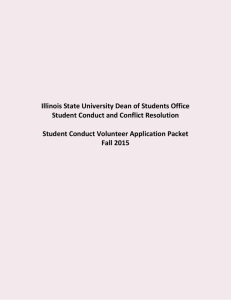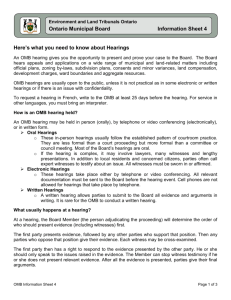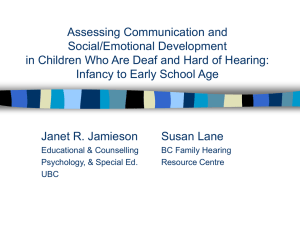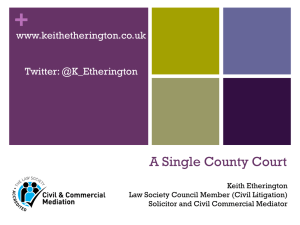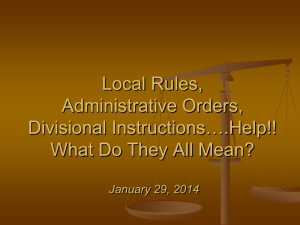Chapter 3: Board Hearings
advertisement
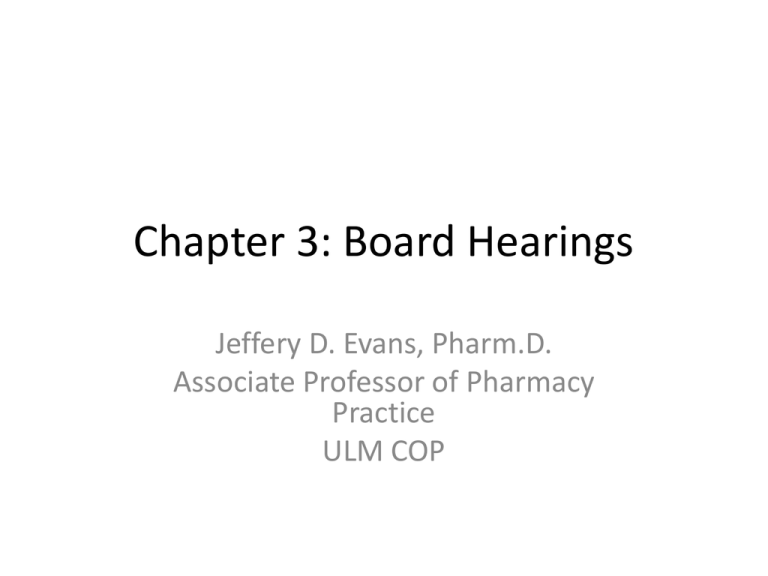
Chapter 3: Board Hearings Jeffery D. Evans, Pharm.D. Associate Professor of Pharmacy Practice ULM COP Chapter 3 • Purpose – To discuss a plan on what happens when a licensed entity does unadvised things – Defines role of a couple of the committees • Impact on practice – Hopefully you will never see this side of the board – Significant impact on those that must go in front of the board Definitions and Summons (301 – 303) • Definitions – What is a person? – What authority over what subject matter and where? • Summons – Required information – These letters are not super clear Legal Terms (305 – 313) • Service – Delivery of the summons to last known address • Default Proceedings – If you don’t respond, you lose the right to defend • Joinder – Multiple ‘complaints’ may be tried at the same time • Consolidation – Very similar to a Joinder • Severence – Opposite of the above two Motions and excuses (315 – 317) • Motion – Such as dismissals, filed within 5 days of hearing • Recusation – Removal from the case – Person may recuse themselves – Board may vote to recuse the person (usually after the respondent has requested it) – Usually if there is a personal conflict All alone (319) • Sequestration – Some may be asked to leave the hearing room Guidelines for Investigation and Sanctions (321 – 323) • Several factors go into determination of sanction • Investigation – Completed by a board agent (usually inspectors) – Report must be completed and turned in. Violations Committee (325) • Committee decides if – Informal hearing • Info here can not be used at later hearings • Member must recuse themselves from later hearings • Charge may ‘die’ here – Interlocutory (summary) • Quick turnaround • Results are quick • Must be a clear danger to the public – Probation Violation • May be either of the above Impairment Committee (327) • Impairment – You may be impaired and ok as long as you do not pose a danger to the public • Committee – Supervises the Practitioner Recovery Program – Recommends providers to evaluate licensees – Holds informal hearings • If person admits he must surrender his license – Makes recommendations about reinstatement Regarding Formal Hearings (329 – 331) • The real deal – Full board hearing, not all get here – All eligible* board members hear the case – Managed by the presiding hearing officer I’m guilty, take pity on me (333 – 335) • Pre-hearing conference – Basically a feeling out time – Facts may be entered – Or consent agreements Layout of the hearing (337 • Opening Statement – Both sides may start this way • Evidence – Very similar to what you see on TV – Presiding hearing officer decides what is admissible • Closing Argument That’s all folks! (343 – 349) • Board Decisions – Due within 30 days of the hearing – Then provided to the respondent – Go into effect 11 days after respondent receives it • Unless appealed • Complaint Dismissal – Completed immediately • Transcripts – Available for a low-low price • Contempt – Not appearing or complying with instructions The dust settles (351 – 355) • Administrative Review – Rehearing request (10 days) – Grounds • • • • Board’s decision was clearly illegal New evidence New issues Public interest? – Time • Board has 30 days to respond) • Judicial Review – 30 days to file either from original order or rehearing denial • Reporting – Board may post whatever it thinks is important Happy ending? (357) • Reinstatement – Full board makes decision – Lesser committee may make recommendation Opinions (359) • The board may issue opinions – If asked – In writing – Non-binding – Used by practitioners to interpret the rule Cease and Desist orders (361) • • • • Not given often Requires immediate stoppage Can instantly be bumped to Judicial system Generally temporary until full board/court review Conclusion • Important Stuff – Understand your ‘due process’ – Understand the board represents the public • NOT YOU!!!!!!!!!!!!!!!!!!! – Understand when you must comply – Understand the different types of hearings – Understand when things get serious

